2025 Lincoln Aviator Review and Test Drive
For the new model year, Lincoln's midsize luxury SUV moves further upscale with fresh styling and an upgraded cabin.
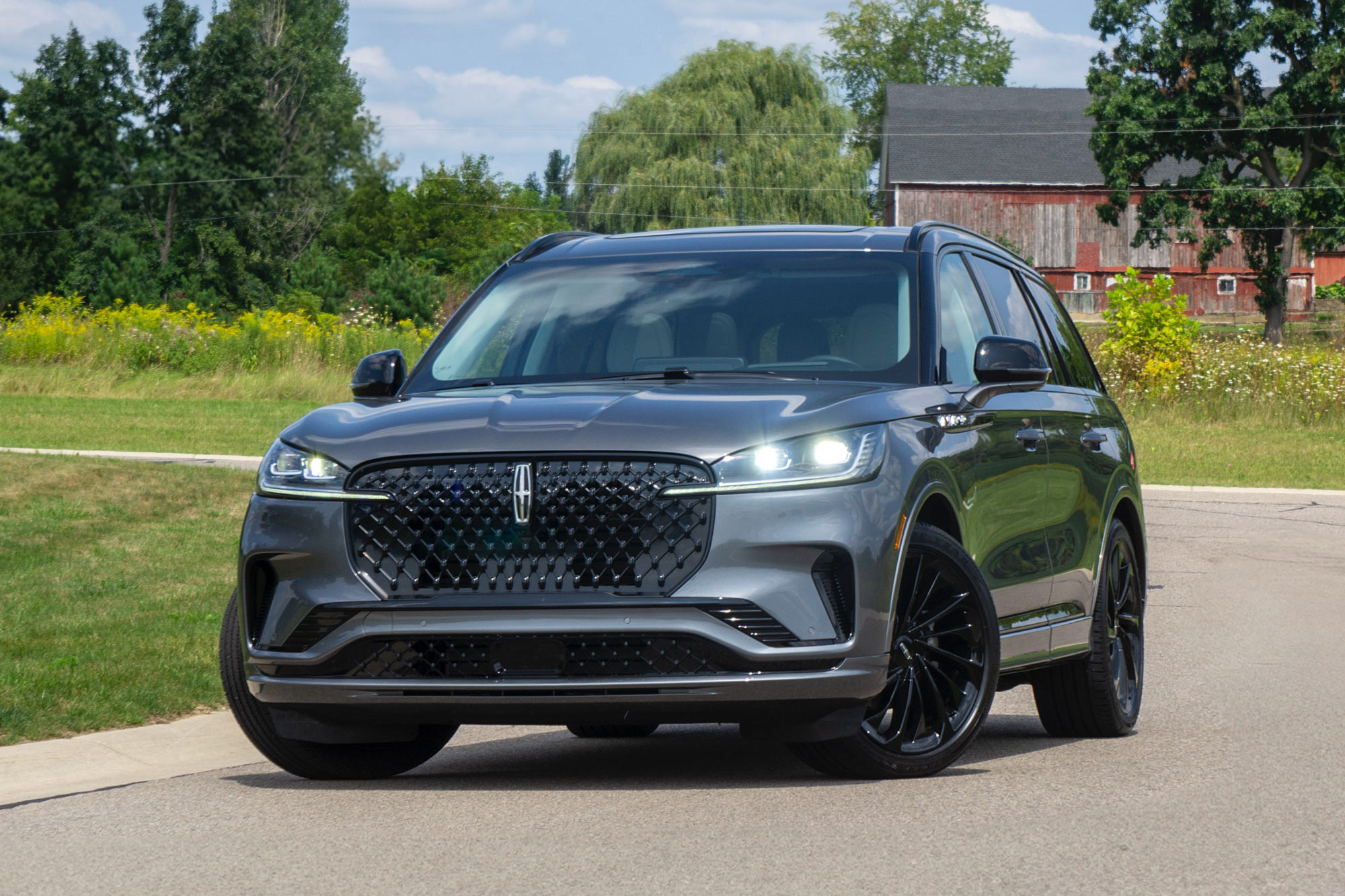 Perry Stern
Perry Stern
Lincoln has been building automobiles for more than 100 years, but a lot can change over a century. By the end of 2020, Ford's luxury brand halted production of its last sedan — the Continental — and switched to a lineup composed exclusively of SUVs.
The 2025 Lincoln Aviator is one of four SUVs the company sells. A midsize model with three rows of seats, it slots into the Lincoln lineup between the midsize two-row Nautilus and full-size Navigator. While it shares many of its underpinnings with the Ford Explorer, the 2025 Lincoln Aviator has a distinctive design and more luxurious interior to help justify its position as a luxury model.
With the 2025 Aviator, Lincoln refreshes the styling, updates the interior, and installs new high-tech features. In addition, its standard twin-turbocharged V6 engine is considerably more powerful than what you'll find in competitors such as the Lexus TX and Mercedes-Benz GLE.
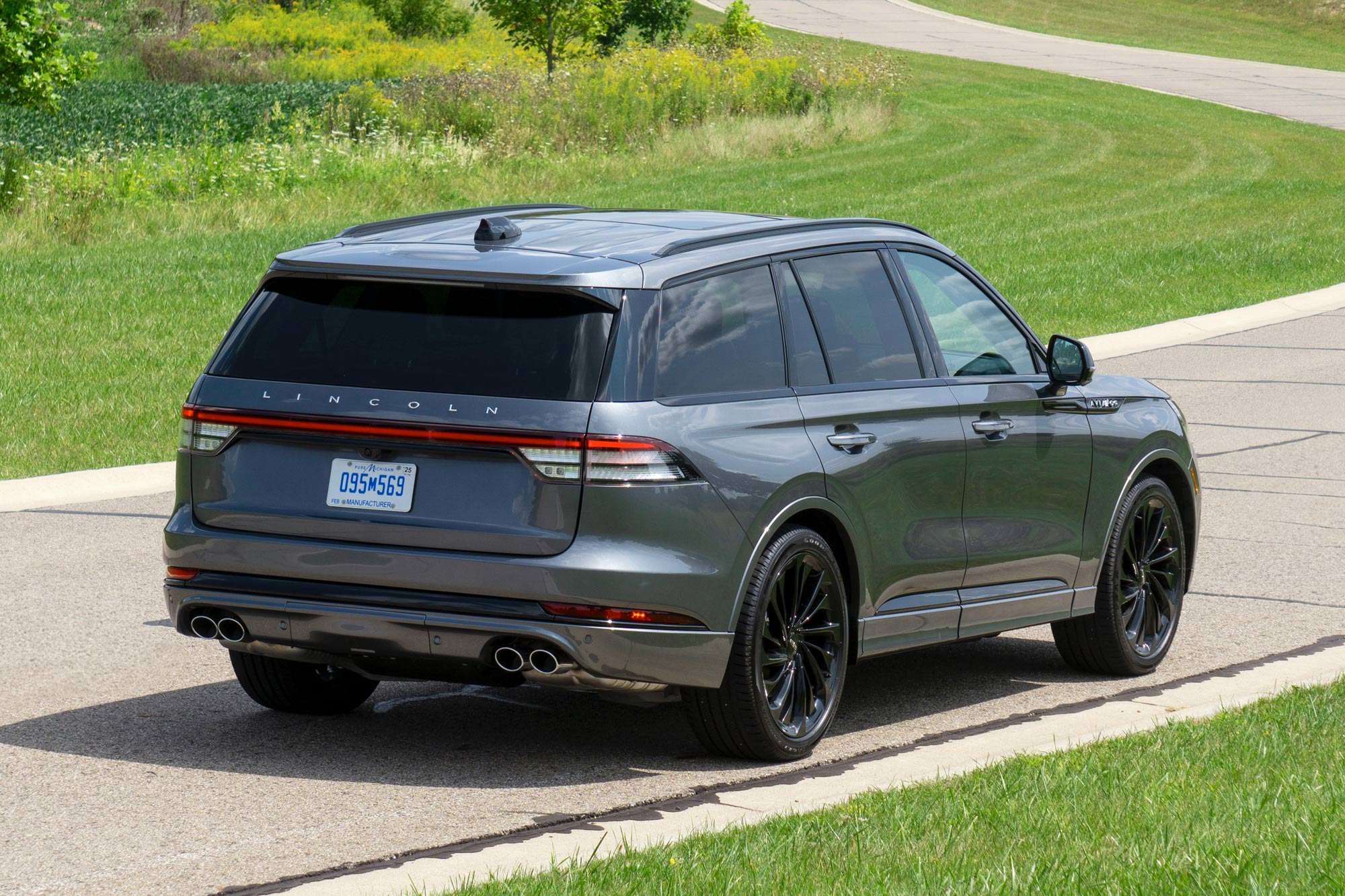 Perry Stern
Perry Stern
Lincoln offers the 2025 Aviator in Premiere, Reserve, and Black Label trim levels, with prices ranging from the low $60,000s to the high $80,000s, including the $1,595 destination charge to ship the SUV from the Chicago assembly plant that builds it to your local dealership.
With its stylish new look and elegant cabin — not to mention one of my favorite seat massagers on the market — the 2025 Aviator is an impressive seven-passenger luxury SUV.
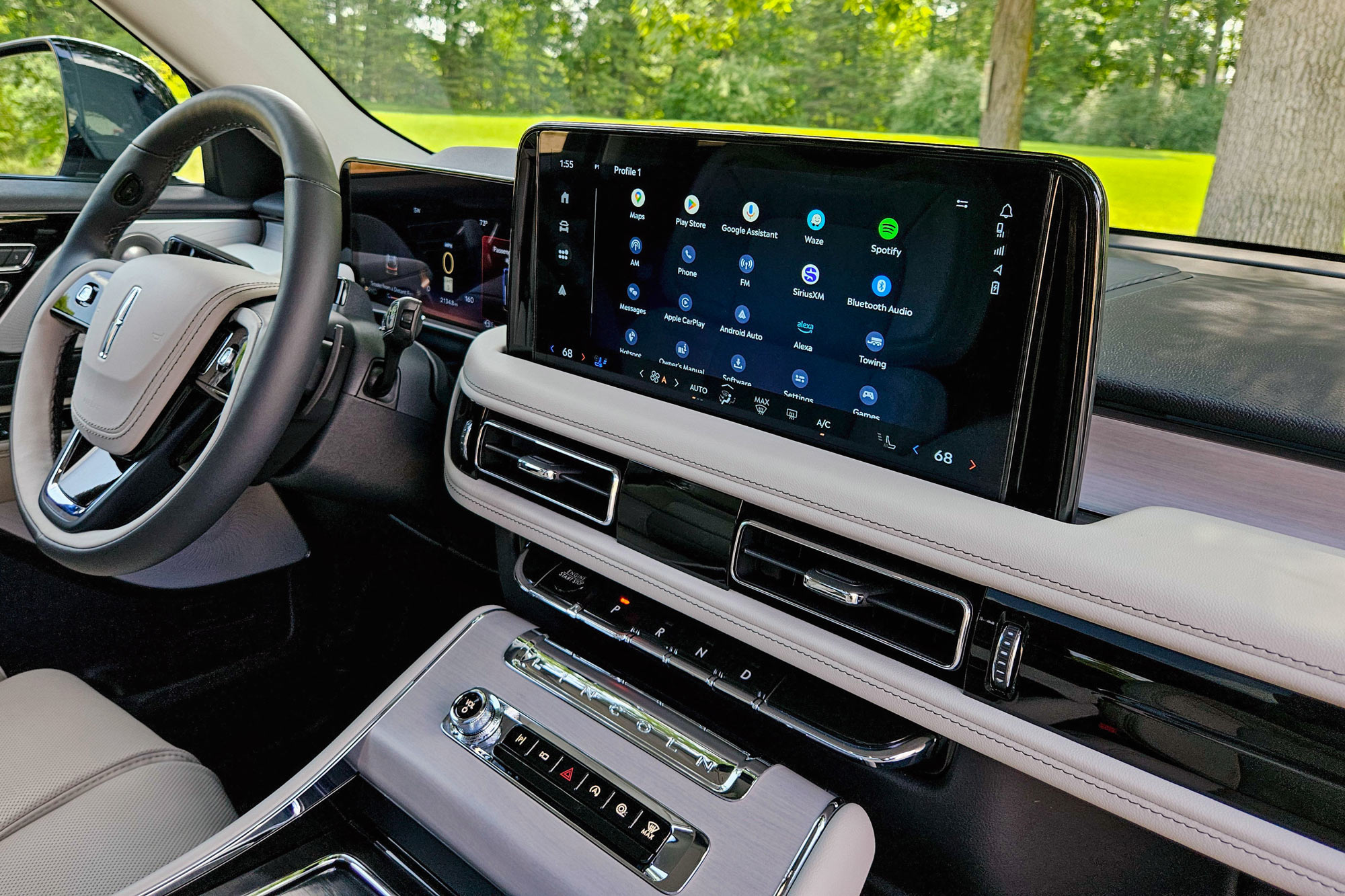 Perry Stern
Perry Stern
Fresh Styling and New Features for the 2025 Lincoln Aviator
Lincoln is updating the look of its entire lineup, and the 2025 Aviator adopts the new design cues. Highlights include a larger grille, slim LED headlights, and animated daytime running lights. New wheels also freshen the SUV's appearance.
Premium materials and considered design characterize the Aviator's improved interior. It doesn't adopt the same full-width display screen the Nautilus and Navigator have, but a new 13.2-inch touchscreen infotainment system and an updated 12.4-inch digital driver display add a modern look. Lincoln has also moved the engine start button from its odd location on the top of the dashboard to the center of the dashboard.
In addition to its bigger screen, the new Google-based infotainment system features Google Maps, access to the Google Play Store, and Google Assistant, one of the best natural voice recognition systems available. Activate it by saying, "Hey, Google," and you can change the temperature, make a call, and set a destination, all by voice.
The new infotainment system also provides entertainment while the Aviator is parked, thanks to an integrated web browser and available apps, including YouTube and Prime Video. Settle into the big, comfortable seats and stream videos or a movie onto the center display or download games to play on the touchscreen.
It may be Google based, but it offers both wireless Apple CarPlay and Android Auto connectivity. I connected my Samsung Galaxy S23+ Android phone via Bluetooth, and a Lincoln screen appeared on my phone, walking me through the simple connection process. The Android Auto works well, but with the Google system and the capability to download apps such as Waze or Spotify from the Play Store, it seemed unnecessary.
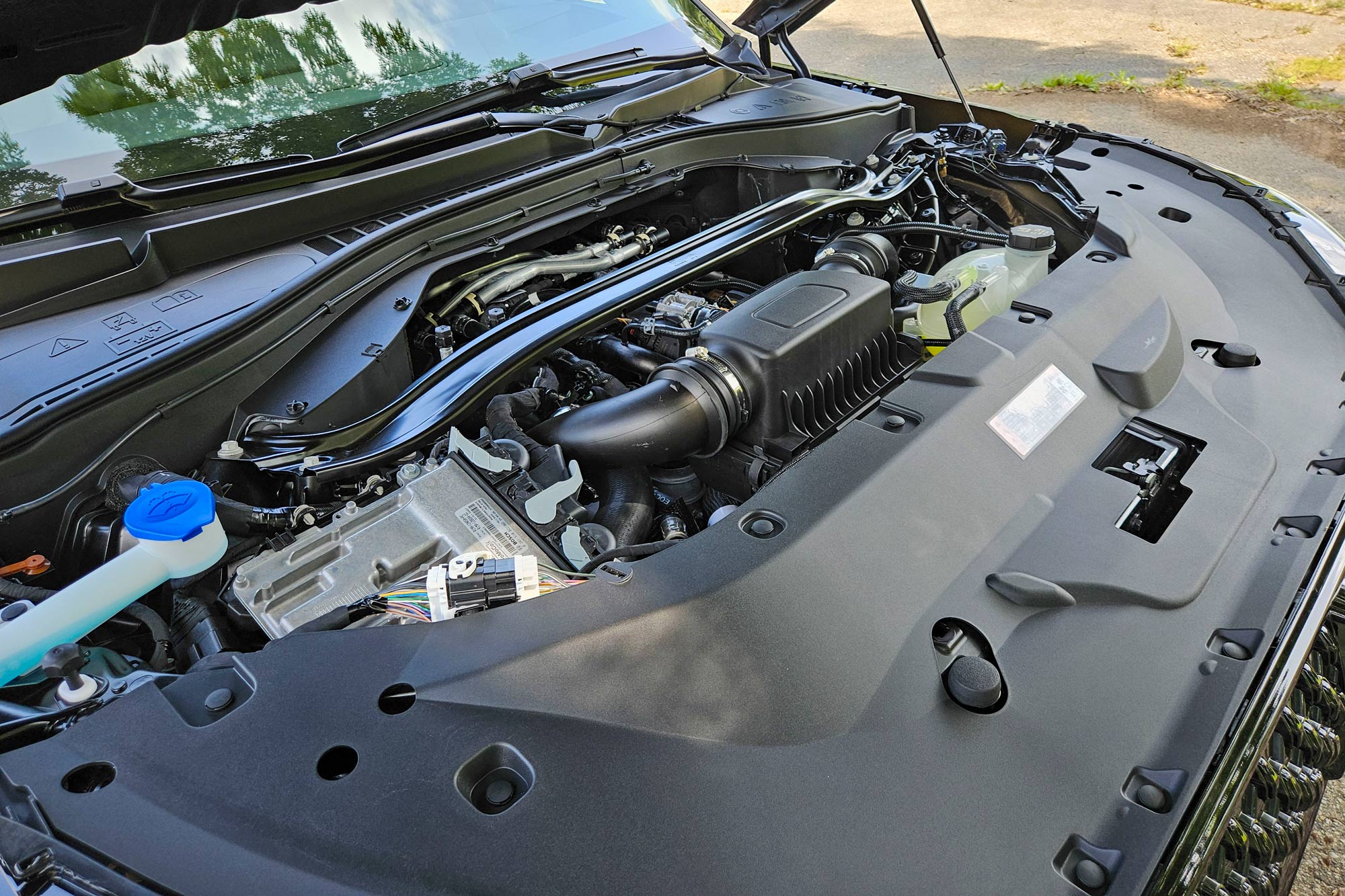 Perry Stern
Perry Stern
Smooth Performance on the Road With the Aviator
While the 2025 Aviator's design and feature updates are welcome, the excellent chassis and stout powertrain carry over from the previous model year. That means all Lincoln Aviators have a twin-turbo 3.0-liter V6 engine delivering 400 horsepower and 415 pound-feet of torque and a smooth-shifting 10-speed automatic transmission. Rear-wheel drive is standard, with all-wheel drive (AWD) available on all trims.
Lincoln provided me with a 2025 Aviator Reserve equipped with AWD for this review, which I tested in southeast Michigan. My evaluation vehicle included Equipment Group 201A, the Jet Appearance Package, the Dynamic Handling Package, a full rear console, and an Air Glide suspension for a total manufacturer's suggested retail price of $83,650, including the destination charge.
As I approached the Aviator with the key fob in my pocket, it welcomed me as if it were happy to see me. In addition to the animated illumination and exterior welcome lighting, the SUV lowered its air suspension to make it easier to get in. It was an impressive experience, and I hadn't gotten behind the steering wheel yet.
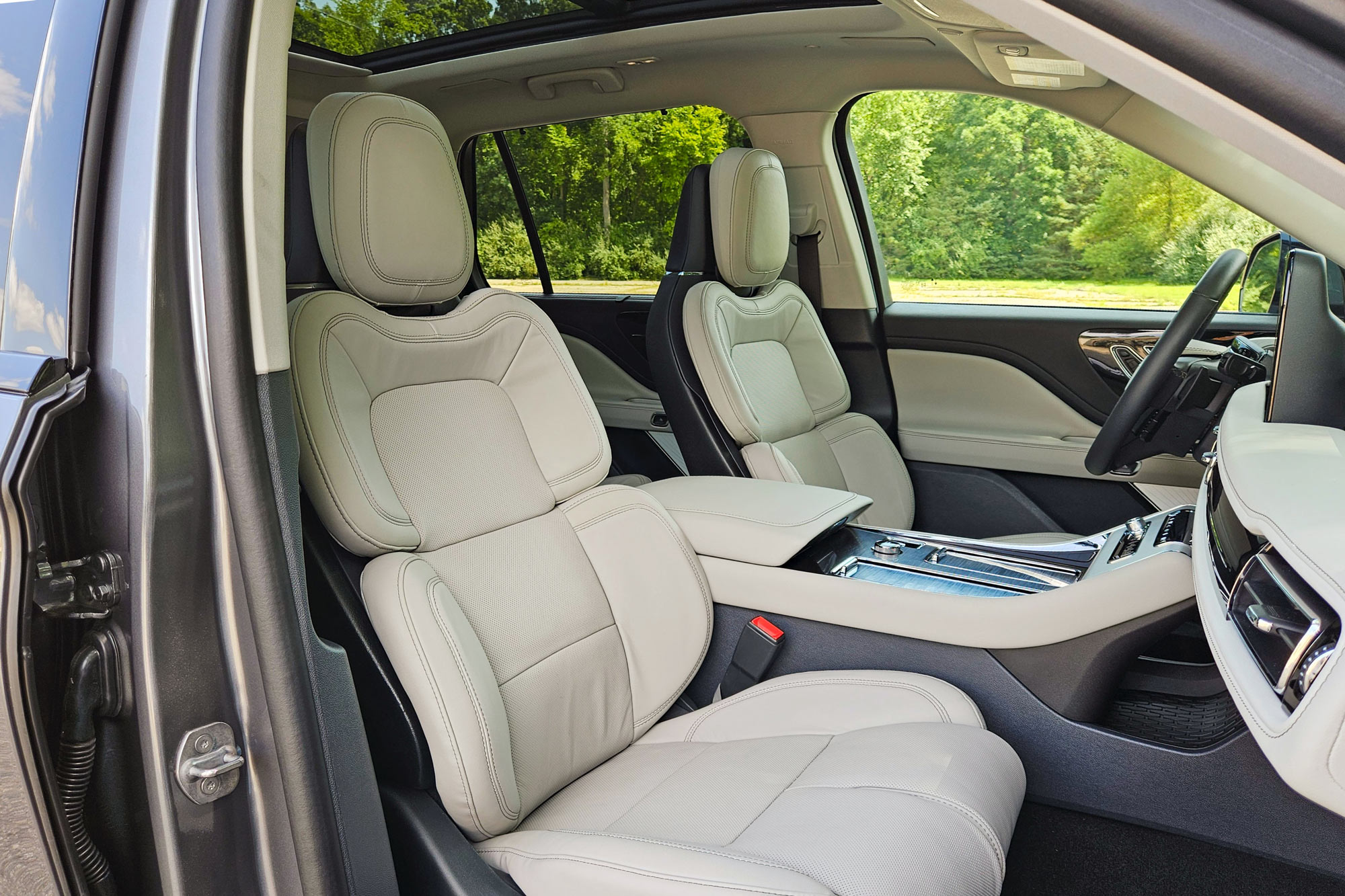 Perry Stern
Perry Stern
After sliding into the SUV, I settled into the Perfect Position front seats with 30-way power adjustment, heating, ventilation, and an excellent multifunction massage system. Trimmed in soft premium leather, the seats are among the nicest I've experienced.
With 400 horsepower on tap, the Aviator is quick off the line, and when you need to pass a slower car on a two-lane road, it gets moving quickly. The Lincoln handles reasonably well, but it isn't for carving up a mountain road. It works much better as a daily driver to motor through town or cruise on the freeway.
Accelerating to freeway speed is quick and effortless for the Aviator, with smooth acceleration and almost imperceptible shifts from the 10-speed automatic transmission. The ride at speed is comfortable and stable, even on Michigan roads in need of repair.However, I was surprised at the level of road noise on the highway, perhaps due to the test vehicle's 22-inch wheels.
The Environmental Protection Agency (EPA) says a 2025 Aviator with AWD should get 17/25/20 mpg in city/highway/combined driving. During my time in the SUV, the trip computer indicated a 20.8 mpg average, validating the EPA ratings.
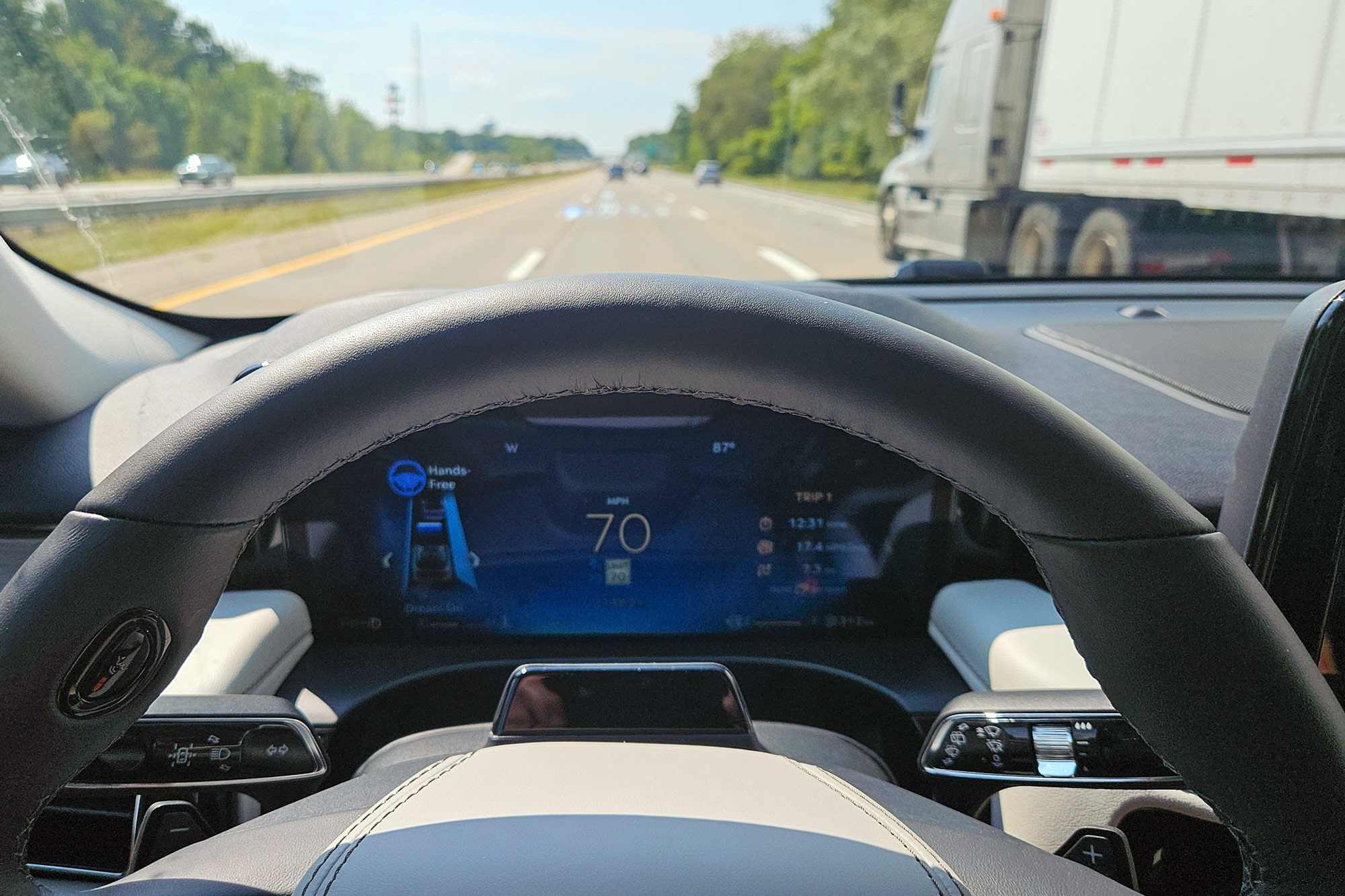 Perry Stern
Perry Stern
Driving Hands-Free With BlueCruise
One of the most significant updates to the 2025 Lincoln Aviator is the addition of standard BlueCruise with a four-year subscription. BlueCruise is Lincoln's advanced driver-assistance system that allows hands-free driving in certain situations.
BlueCruise works on multilane limited-access freeways in areas designated as Hands-Free Blue Zones, including Interstate 94 in southeast Michigan. After entering the highway, I activated the adaptive cruise control and set the speed to 70 mph. Immediately, the driver display turned blue, and in the upper left corner, an icon appeared to indicate BlueCruise was active, and I could take my hands off the wheel.
BlueCruise kept the Lincoln centered in the lane and at the desired speed until I caught up to a slower vehicle. The SUV slowed to match the pace, and after a few moments, a message on the driver display let me know that passing was available. I activated the left turn signal, and the SUV smoothly changed lanes and resumed the set speed to pass the slower vehicle.
The automated lane-change function is sophisticated. In one instance, I signaled to change lanes, and the Aviator began to move to the left when it detected a vehicle coming up fast from behind. In response, it canceled the lane change and put me back in my original spot.
While BlueCruise allows hands-free driving, that doesn't mean the driver can read a book or take a nap. The system requires that the driver pay attention to the road, and a driver-facing camera ensures compliance.
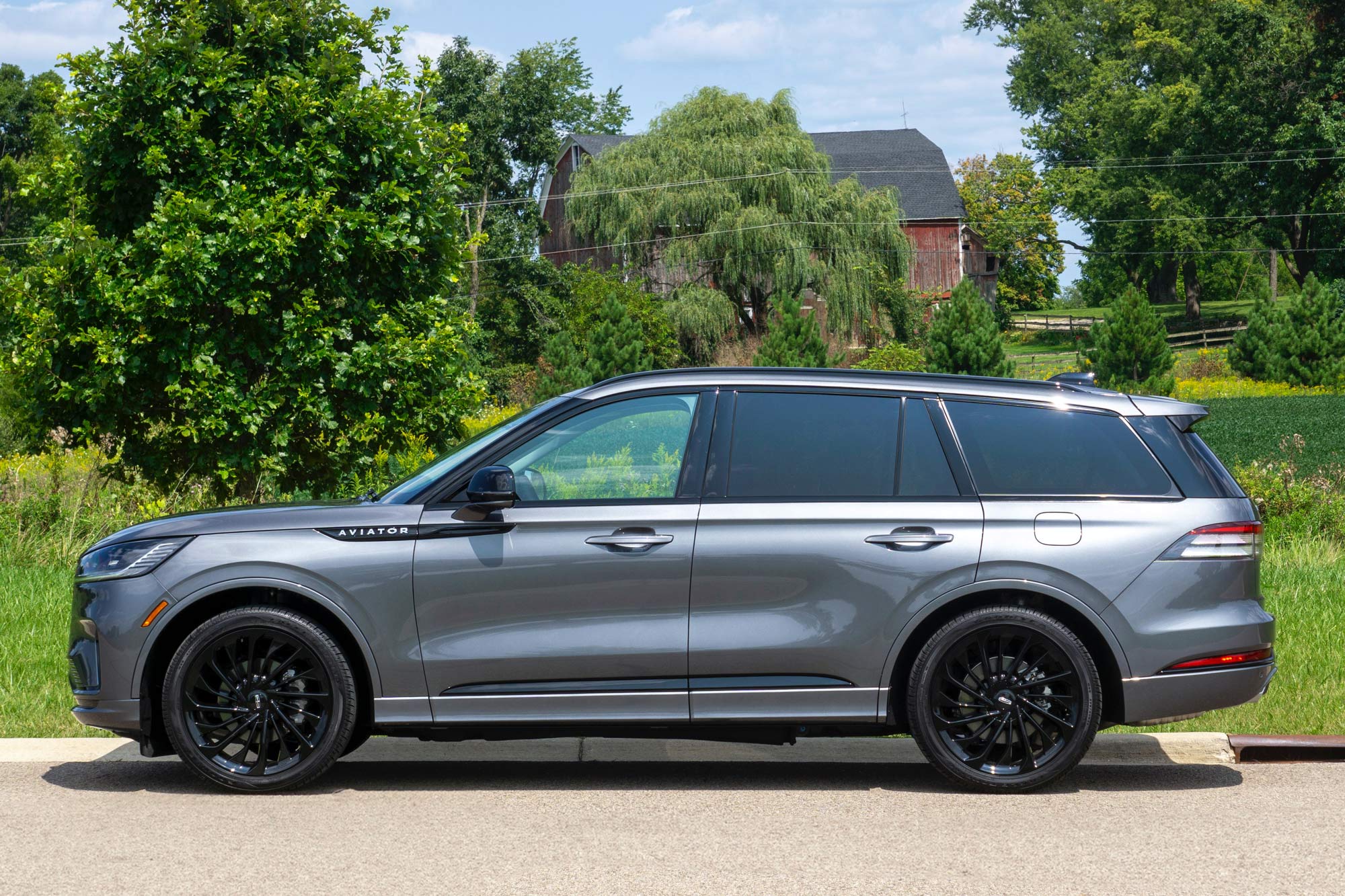 Perry Stern
Perry Stern
How Does the 2025 Lincoln Aviator Stack Up?
Lincoln sales have steadily declined since 2019, so the company is making changes. An all-new 2024 Nautilus began Lincoln's transformation, and the redesigned 2025 Navigator rejuvenates the automaker's flagship model. Slotted between these two models, the updated 2025 Aviator nearly completes the lineup's makeover.
The three-row midsize luxury SUV segment, however, offers some appealing alternatives, ranging from the Acura MDX to the Volvo XC90, with several rivals in between. With its elegant and comfortable cabin, powerful twin-turbo V6 engine, and standard BlueCruise, the 2025 Lincoln Aviator is worthy of consideration in this class.
Lincoln provided the vehicle for this 2025 Aviator review.
Written by humans.
Edited by humans.
 Perry Stern
Perry SternAs a small child, Perry was constantly playing with toy cars and trucks, and that enthusiasm for anything motorized with wheels never faded. After college, he moved to Seattle and began his long automotive career working in an automotive consulting firm, helping customers choose the right vehicle for their needs. In the late 1990s, Perry joined Microsoft to work on CarPoint, part of the new Microsoft Network (MSN). He went on to become editor of the site, remaining on staff for 20 years before venturing out on his own. Today, in addition to his work on Capital One Auto Navigator, he still contributes to MSN, as well as J.D. Power, TrueCar.com, and U.S. News & World Report. Perry lives in the small town of Dexter, Michigan, with his wife and dog, and he still smiles when he sees his 2006 Mazda Miata in the garage.
Related articles
View more related articles